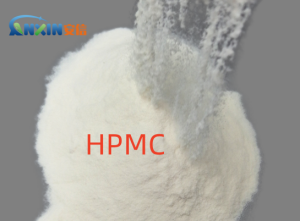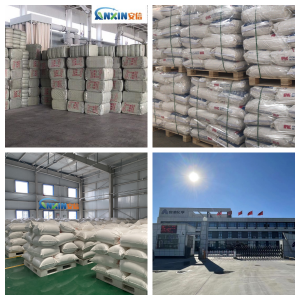Hydroxypropyl methylcellulose (HPMC) is a common water-soluble polymer cellulose ether. Due to its excellent thickening, water-retention, dispersing, film-forming, and bonding properties, it is widely used in building materials. In the gypsum industry, HPMC has become an indispensable additive, particularly in gypsum-based self-leveling mortars, gypsum putties, gypsum binders, and ready-mixed gypsum.
1. Improving Water Retention
Gypsum products require sufficient water during construction to ensure smooth crystallization. Excessive water loss can lead to inadequate hydration of the gypsum, resulting in powdering, insufficient strength, or cracking. HPMC has excellent water-retention and film-forming properties, forming a thin film on the surface of gypsum particles, slowing water evaporation and permeation loss, thereby ensuring a more uniform and stable hardening process for the gypsum product. This property is particularly critical for large-scale construction, improving the density and durability of the finished product.
2. Improving Workability
The fluidity and workability of gypsum materials directly impact construction results. HPMC significantly thickens and lubricates gypsum slurries, preventing settling and segregation, making the mortar more uniform and easier to apply. It also improves the thixotropy of the gypsum slurry, meaning it exhibits good fluidity during application while maintaining a good consistency after standing, thereby enhancing smoother application and more efficient handling. HPMC significantly improves application comfort, whether applied by hand or sprayed.
3. Improving Adhesion
In gypsum binders or putties, HPMC strengthens the adhesion of the gypsum slurry to the base layer. Its film-forming properties ensure that the gypsum product forms a secure bond with the wall surface after hardening, reducing the risk of hollowing and flaking. This is particularly important for drywall installation, tile bonding, or wall leveling.
4. Extending Open Time
Gypsum products often set and harden quickly, making application challenging. HPMC, by slowing water loss, can moderately extend the open time of the gypsum slurry, allowing more flexibility for construction workers. This not only improves construction flexibility but also reduces material waste caused by over-hardening.
5. Preventing Cracking and Pulverization
Because HPMC improves hydration conditions and shrinkage properties in gypsum slurry, it helps reduce cracks caused by shrinkage or stress concentration after hardening. HPMC also reduces surface pulverization on gypsum products, making them more durable and wear-resistant.
6. Adapting to the Needs of Different Gypsum Products
In gypsum-based self-leveling mortars, HPMC ensures good flow and surface smoothness; in gypsum putty, it improves scratch resistance and sag resistance; and in gypsum binders, it enhances adhesion and extends workability. Depending on the formulation and application of the gypsum product, HPMC can be optimized by selecting different degrees of substitution and viscosity grades.
7. Improving Finished Product Performance
In addition to improvements during the construction phase, HPMC can also enhance the final mechanical properties and durability of gypsum products. It strengthens the microstructural bonds between gypsum crystals, making the hardened material denser and stronger. Furthermore, after film formation, HPMC can also provide some protection for gypsum products, improving their abrasion resistance and weather resistance.
HPMC plays a crucial role as a “performance modifier” in the gypsum industry. By improving water retention, thickening, and workability, it significantly enhances the workability and quality of gypsum products. By enhancing adhesion and extending open time, it improves the suitability of gypsum materials in various applications. HPMC not only optimizes the construction experience of gypsum products but also enhances their durability and service life. Therefore, whether in ready-mixed gypsum, self-leveling mortar, gypsum putty, or adhesives, HPMC is an indispensable key additive for achieving high-performance gypsum products.
Post time: Sep-16-2025

